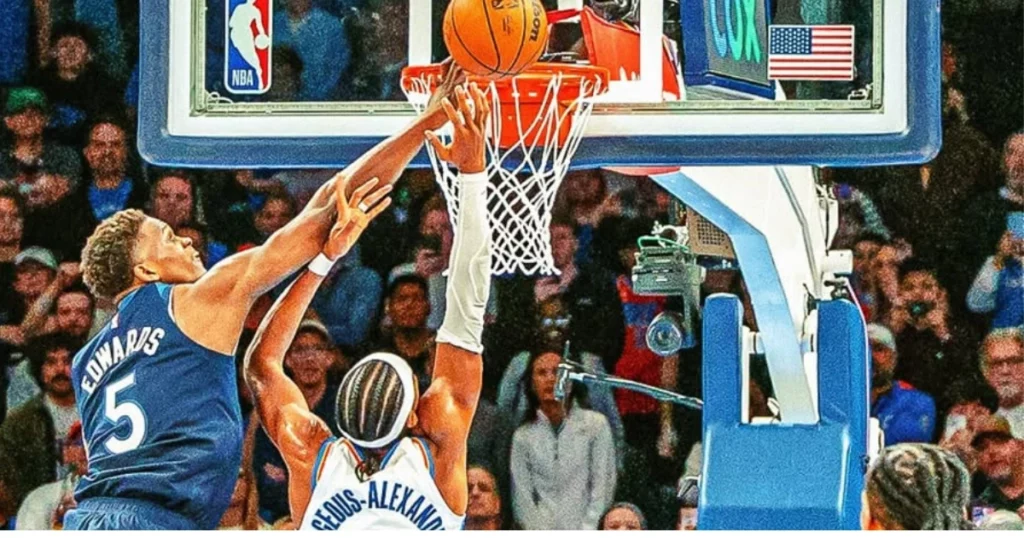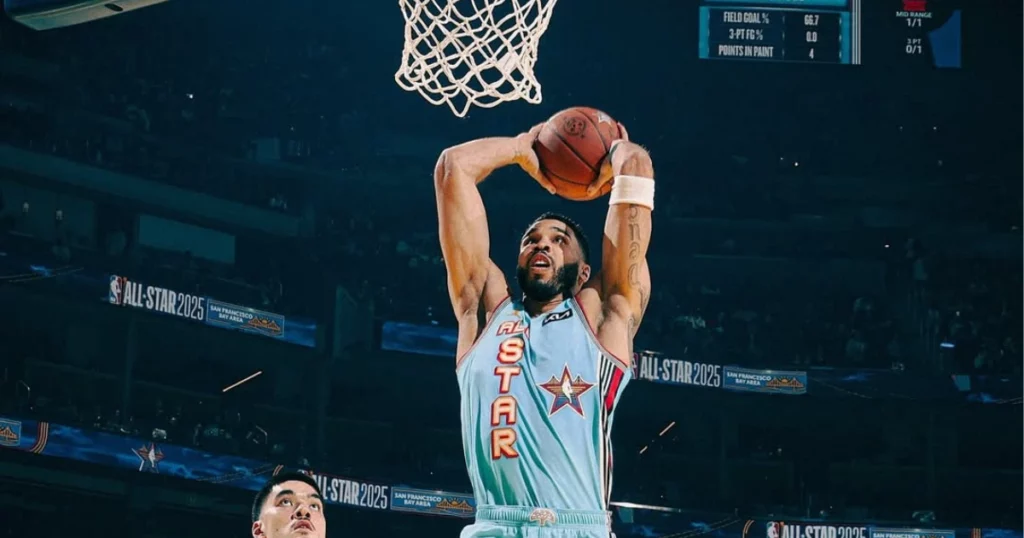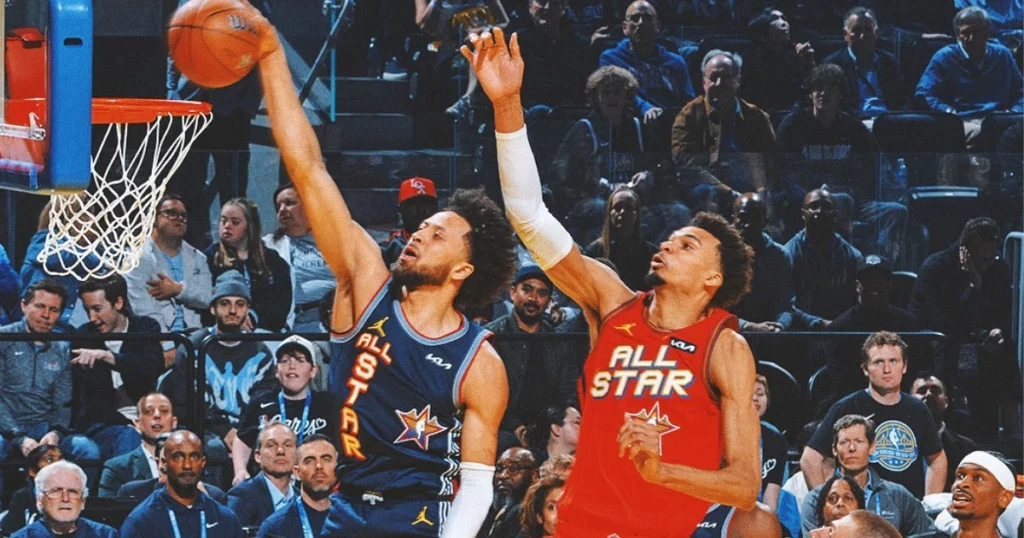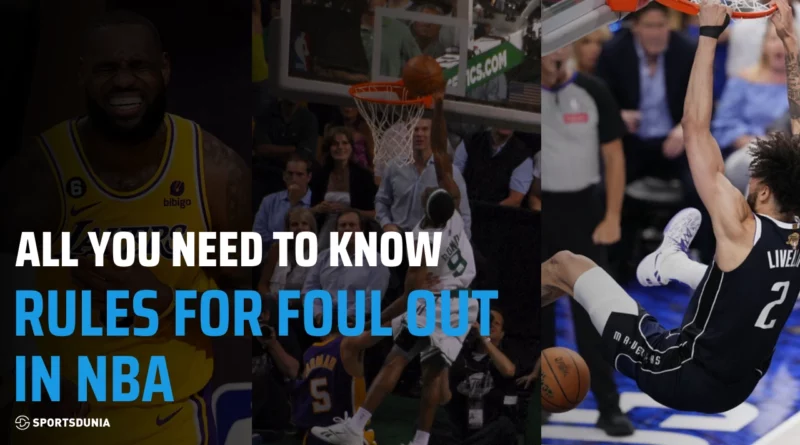How Many Fouls to Foul Out in the NBA: Rules and Regulations Explained
In the NBA, fouls significantly impact player and team strategy by dictating defensive intensity, forcing adjustments based on foul trouble, and influencing late-game decision-making, where teams may intentionally foul weaker free throw shooters to gain a strategic advantage, especially when trailing; essentially, managing fouls can make or break a team’s game plan depending on the situation and the players involved. In this article, you will get to know about NBA Fouls to Foul Out Rules, Rules, and Regulations regarding Fouls and how fouls affect the team’s strategy.
NBA Fouls to Foul Out Rules
“Fouls to Foul Out” refers to the number of personal fouls a basketball player can commit before being removed from the game for exceeding the allowed limit; in the NBA, a player ‘fouls out’ after committing six personal fouls in a single game, meaning they cannot play for the rest of the game once they reach that number.
A player who commits their sixth (and subsequent) personal foul and must remain in the game because the team has no eligible players remaining is charged with a non-unsportsmanlike conduct technical foul, with the penalty of a single free throw, regardless of offensive or defensive foul. Likewise, a player who was the last player to commit six fouls is called back into the game if no eligible players remain following an injury or ejection. The player cannot be ejected for a technical foul in either situation.
This type of technical foul serves in effect as a “player foul penalty” of a bonus free throw, similar to the team foul penalty. However, this bonus free throw is awarded regardless of the foul being an offensive or defensive foul, unlike a team foul penalty, where two free throws are only allowed for defensive fouls. If a player commits his sixth or subsequent foul while on offense and there are no eligible players available to take their place on the court, one free throw is still awarded, in addition to possession of the ball to the team shooting the free throw. One player who has faced many foul-outs in his career is LeBron James. In 2017 the NBA player fouled out for the fifth time in 1,034 regular-season games and was again fouled out Harden on charge. However, the most prominent moment in regards to foul out in his career was on 29 January 2023 when James broke down during Los Angeles Lakers Vs Boston Celtics where they lost the match due to a controversial missed foul.
NBA Foul Rules

In the NBA, bonus rules concerning team fouls in a quarter begin with the fifth team foul. A recent rule change ensures that a team not in the penalty late in a period cannot commit multiple fouls without consequence. The rules regarding team foul penalties are similar to those used in FIBA, with three significant differences:
Only defensive and loose-ball fouls count toward a team’s limit for the team foul penalty. Offensive fouls do not contribute to this limit unless a player is in the individual foul penalty situation.
The team foul penalty comes into effect after a team commits two fouls in the last two minutes of a period if it has not yet reached the penalty phase during the first ten minutes (NBA) or eight minutes (WNBA) of that period. This means that free throws are awarded starting with the fifth team foul, or from the second foul in the final two minutes of the period, whichever occurs first.
If a game goes into overtime, the team foul counts reset to zero and are similarly reset before each subsequent overtime period. The penalty phase begins with the fourth foul in each overtime, as overtime periods are much shorter (5 minutes) compared to regulation periods (10/12 minutes). As in regulation play, two free throws are awarded for non-shooting defensive fouls during the bonus, and committing one foul in the final two minutes automatically places the team in the penalty phase.
Also Read: Ranking The Biggest Comebacks in NBA History Of All Time
The Impact of Fouls on Basketball Strategy

Fouls in basketball significantly impact strategy by forcing teams to balance aggressive defense with the risk of giving up free throws, potentially altering offensive flow, and influencing late-game decision-making. Though particularly when a team needs to intentionally foul to slow down the clock or disrupt the opponent’s rhythm depending on the score and time remaining on the clock; essentially, a team must choose when to foul strategically to minimize the penalty while maximizing defensive disruption. Here are some key points about fouls and strategy:
Defensive pressure
Teams can use fouls strategically to disrupt an opponent’s offensive rhythm, particularly against a skilled scorer, by committing a foul just before they attempt a shot or drive to the basket, forcing them to shoot free throws instead of potentially scoring more points.
Bonus situation
When a team accumulates a certain number of fouls in half, the opposing team is awarded free throws on any subsequent fouls, forcing defensive players to play more cautiously and potentially giving the offensive team easy points.
Fouling out
If a player has more than 5 fouls in a game of basketball, they are removed from the game, impacting a team’s rotation and forcing adjustments to their defensive strategy.
Late-game fouling
In close games, a trailing team may intentionally foul the leading team in the final minutes to stop the clock and limit the opponent’s scoring opportunities to just two points per possession from the free-throw line.
Technical fouls
Beyond personal fouls, technical fouls (for unsportsmanlike behavior) can also impact strategy as they provide the opposing team with free throws and can disrupt a team’s momentum.
What Are the Consequences If Every Player Fouls Out?

If all players on a team foul out, the consequences vary depending on the league and level of play. In the NCAA and FIBA, if a team has fewer than five players available due to fouling out, injury, or ejection, play continues. However, if the team is reduced to a single player, they are declared the loser.
In the NBA and WNBA, teams cannot be reduced below five players. If a player fouls out and only five eligible players are remaining, the player who fouled out stays in the game. If another player is injured or ejected, the last player to foul out rejoins the game. This situation results in a technical foul, with the non-offending team shooting one technical foul free throw.
Also Read: How Do NBA Playoffs Work: Rules and Format Explained
What happens after 5 fouls in basketball?
A player will be removed from the remaining game after committing six personal fouls in a game.
When did the NBA change to 6 fouls?
The NBA rule that a player is disqualified after six fouls was put in place when the league’s games were extended to 48 minutes.
Can you get 7 fouls in basketball?
No, once a player reaches the maximum number of fouls in a game, they’re considered “fouled out,” and must leave the game and not return. The maximum number of player fouls is six in the NBA.
Do technical fouls count?
In the NBA, technical fouls do not count toward a player’s foul total. A player can receive multiple technical fouls without affecting their foul count.
What if a team runs out of players?
If a team runs out of players due to fouling out, injuries, or ejections, in the NBA. Then, in this case, a team cannot have fewer than five players on the court at any time during live play. If a team has fewer than five players, they are assessed a technical foul.
What is the foul limit in overtime?
In the NBA, the foul limit in overtime is the same as the regular game, meaning players carry their foul count from regulation into overtime and foul out at the same number of fouls.
Is the rule the same in other leagues?
No, while the core concept of a basketball foul is the same across different leagues like the NBA, NCAA, and FIBA, there can be slight variations in how specific foul situations are interpreted and penalized, meaning the foul rules are not completely identical in every league; some leagues might have slightly different interpretations of what constitutes a foul depending on the situation.
